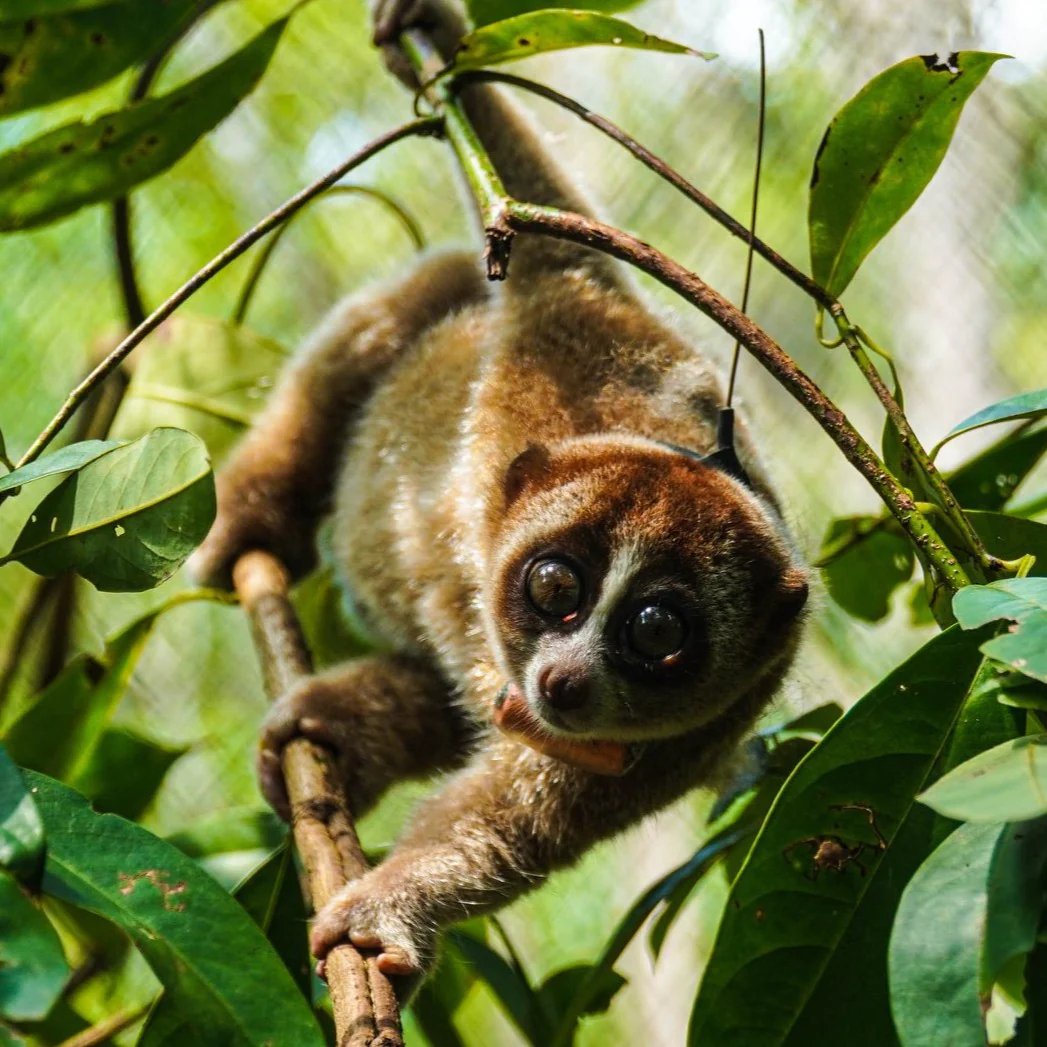Meet the fascinating slow lorises – those wide-eyed, teddy bear-like primates that might just surprise you. While their gentle demeanor and deliberate movements make them seem cuddly, there’s more to these creatures than meets the eye. These nocturnal wonders, found in the tropical forests of Southeast Asia, are not just skilled hunters and climbers; they also carry a unique feature that sets them apart in the animal kingdom.
Venomous secrets Unlike their primate counterparts, slow lorises boast modified brachial glands at their elbows. These glands produce a toxic secretion that, when mixed with their saliva, becomes a venomous bite – a feature shared with some of the world’s deadliest snakes. Though not as potent as snake venom, the effects can be quite severe, causing intense pain, swelling, and, in extreme cases, anaphylactic shock.
The venom
making process is a spectacle in itself. Slow lorises raise their arms, lick oil-secreting glands on their upper arms, and let the venom pool in their sharp canines, capable of cutting into bone. According to primate conservationist Anna Nekaris from Oxford Brookes University, the consequences of a slow loris bite can be grim: “The result of their bite is really, really horrendous. It causes necrosis, so animals may lose an eye, a scalp, or half their face.”

Unraveling mysteries Scientists are still delving into the composition and evolutionary purpose of this unique venom. Dr. Bryan Fry, a biochemist and Associate Professor at the University of Queensland, specializing in slow lorises at the Cikananga Wildlife Rescue Centre in Indonesia, emphasizes, “Slow lorises are the only known primates with venom, and they’ve been virtually unstudied.”
The dual role of venom
So, why would a primate wield venom? The slow loris has its reasons – both in the wild and for self-preservation. In hunting, the venom immobilizes a range of prey, from insects to small mammals and birds. When faced with danger, slow lorises use their venom defensively, delivering a bite that can deter predators.
Additionally, there’s a theory that suggests venom aids in intraspecies competition, helping slow lorises establish dominance and defend their territories. The incapacitating effect on rivals allows the winning loris access to crucial resources such as food and mates. The secrets of slow lorises continue to unfold as scientists unravel the mysteries behind their venomous allure.


